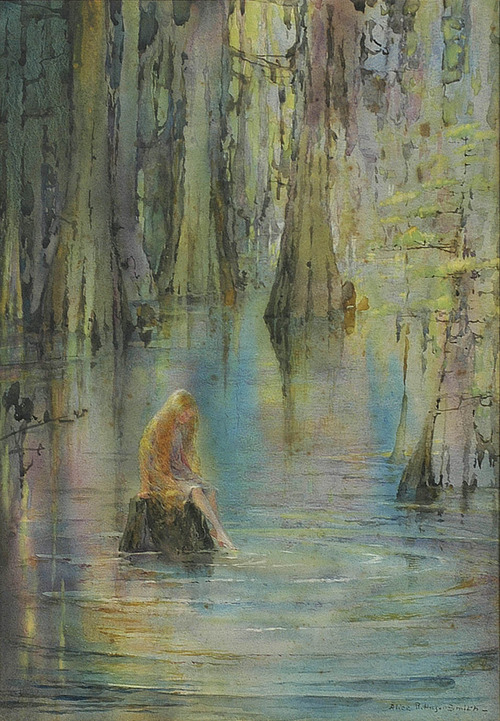
Biltmore Estate hid precious art during World War II
By Tony Kiss
Asheville Citizen-Times
ASHEVILLE In the new World War II movie “The Monuments Men,” George Clooney and Matt Damon are army officers assigned to save historic artworks before they are plundered or destroyed by Hitler.
Asheville’s Biltmore Estate played a similar top-secret role when precious art was stashed at the big house during the war.
Famous works by Rembrandt, Raphael, Anthony van Dyck – even Gilbert Stuart’s George Washington portrait – were whisked away from Washington’s National Gallery of Art by train and hidden at the estate to protect against possible attacks.
“It was all done in secret,” said Darren Poupore, chief curator.
“They built in steel doors in the (music room) archways and steel bars on the windows,” he said. “They put curtains over the doors to conceal them.”
Armed guards stood watch around-the-clock to protect the art, he said.
The story began before World War II, when David Finley, the National Gallery of Art’s new director, fretted about the museum’s security from enemy attack.
“He was a friend of Edith Vanderbilt and had stayed at Biltmore in the 1920s. He remembered it as being fireproof and Asheville (as) being a remote location,” Poupore said.
When the war began, Finley asked Vanderbilt whether the house could be used to secure some of the museum’s prized works, and she agreed. The music room was unfinished, and it was chosen to hold the art. In all, 62 paintings and 17 sculptures were crated and delivered to Biltmore by train in a January 1942 snowstorm, Finley’s papers reveal.
And there they remained in steel racks until 1944, when the wartime threat was lessened and the art was returned to the National Gallery.
Asheville was unified in World War II service, local historian Rob Neufeld said.
The Grove Park Inn was used to house prisoners of war, “and there were much more sensitive government operations here,” Neufeld said. Many local residents joined the war effort through military or government service, so it was not unusual that Biltmore did its part, he said.
Keeping the art collection secret was easier in an era before the Internet, Poupore said.
“People understood the seriousness of the war and national security concerns.”
While its arrival was hush-hush, the art left Asheville with “grand fanfare,” photographs and motorcycle escorts with sirens blazing, Poupore said.
Biltmore reopened to the public in 1946 and has not closed since, he said.
Asheville Citizen-Times
ASHEVILLE In the new World War II movie “The Monuments Men,” George Clooney and Matt Damon are army officers assigned to save historic artworks before they are plundered or destroyed by Hitler.
Asheville’s Biltmore Estate played a similar top-secret role when precious art was stashed at the big house during the war.
Famous works by Rembrandt, Raphael, Anthony van Dyck – even Gilbert Stuart’s George Washington portrait – were whisked away from Washington’s National Gallery of Art by train and hidden at the estate to protect against possible attacks.
“It was all done in secret,” said Darren Poupore, chief curator.
“They built in steel doors in the (music room) archways and steel bars on the windows,” he said. “They put curtains over the doors to conceal them.”
Armed guards stood watch around-the-clock to protect the art, he said.
The story began before World War II, when David Finley, the National Gallery of Art’s new director, fretted about the museum’s security from enemy attack.
“He was a friend of Edith Vanderbilt and had stayed at Biltmore in the 1920s. He remembered it as being fireproof and Asheville (as) being a remote location,” Poupore said.
When the war began, Finley asked Vanderbilt whether the house could be used to secure some of the museum’s prized works, and she agreed. The music room was unfinished, and it was chosen to hold the art. In all, 62 paintings and 17 sculptures were crated and delivered to Biltmore by train in a January 1942 snowstorm, Finley’s papers reveal.
And there they remained in steel racks until 1944, when the wartime threat was lessened and the art was returned to the National Gallery.
Asheville was unified in World War II service, local historian Rob Neufeld said.
The Grove Park Inn was used to house prisoners of war, “and there were much more sensitive government operations here,” Neufeld said. Many local residents joined the war effort through military or government service, so it was not unusual that Biltmore did its part, he said.
Keeping the art collection secret was easier in an era before the Internet, Poupore said.
“People understood the seriousness of the war and national security concerns.”
While its arrival was hush-hush, the art left Asheville with “grand fanfare,” photographs and motorcycle escorts with sirens blazing, Poupore said.
Biltmore reopened to the public in 1946 and has not closed since, he said.
Subscribe to:
Posts (Atom)

+-+The+Guiding+Light.jpg)
+from+GRIMM%E2%80%99S+FAIRY+TALES.jpg)








+Wyeth.jpg)

















+-+%E2%80%9CSnegourochka.%E2%80%9D.jpg)


.jpg)
.jpg)
.jpg)
.jpg)
.jpg)
.jpg)
.jpg)
.jpg)










